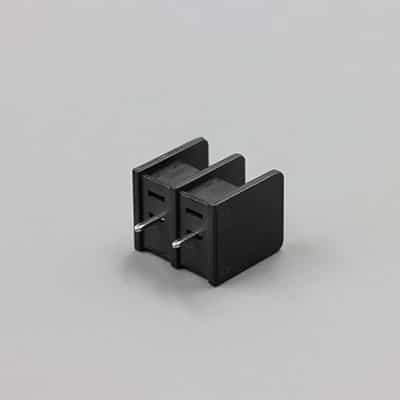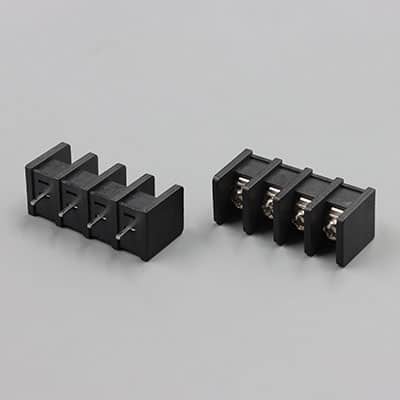Barrier strips are a type of electrical connector widely used for connecting wires to circuits or devices. They ensure reliable and secure connections through the use of screw terminals or clamping mechanisms, making them ideal for situations where wires need to be connected and disconnected repeatedly. Barrier strips are commonly found in applications like audio equipment, power distribution systems, home appliances, and industrial control systems. If you didn’t find the barrier strip connector you want, welcome to contact us for help.



SCT25C-7.62-XXB3650
- Pitch: 7.62mm
- Rated voltage: 300V
- Rated current: 20A
- Withstanding Voltage: AC1600V/Min
- Wire range: 22~14AWG
- Termina: Brass.0.7T Tin Plated
- Screw: M3 Steel Ni-Plated
- Housing: PA66.94V-0



SCT35C-8.50-XXB3650
- Pitch: 8.50mm
- Rated voltage: 300V
- Rated current: 20A
- Withstanding Voltage: AC1600V/Min
- Wire range: 22~14AWG
- Termina: Brass.0.7T Tin Plated
- Screw: M3 Steel Ni-Plated
- Housing: PA66.94V-0
Key Features of Barrier Strips:
- Screw or Clamping Connection: Wires are secured by screws or clamps, which provide a stable and strong connection, preventing wires from becoming loose.
- Variety of Sizes and Configurations: Available in single-row or double-row designs, barrier strips can fit different space constraints and connection needs.
- Insulation Bar Design: Typically includes plastic or insulating strips to prevent short circuits between conductive components, enhancing safety.
- Enclosed or Open Design: Barrier strips can come with protective enclosures for added safety or in open designs for applications with lower risks.
Applications of Barrier Strips:
- Industrial Control Systems: Barrier strips are used to connect sensors, relays, controllers, and other devices, simplifying complex wiring.
- Audio Equipment: These connectors are commonly found in speakers, amplifiers, and other audio devices, ensuring stable signal transmission.
- Power Distribution Systems: In power panels, barrier strips are used to connect power lines, grounding wires, and other electrical components, providing a safe and reliable power distribution.
- Home Appliances: Barrier strips are used to connect power supplies, switches, or other electrical parts in appliances, allowing easy maintenance and replacement.
- Electromechanical Equipment: In machines like motors and pumps, barrier strips provide electrical connections with high reliability, suitable for harsh environments.
Advantages of Barrier Strips:
- High Reliability: The screw-tightened connection ensures that wires remain securely in place, even in environments subject to vibration or electrical fluctuations.
- Easy Maintenance: The design of barrier strips allows for quick connection and disconnection, making maintenance and replacement easier.
- Flexibility: Barrier strips support multiple wire connections, making them ideal for complex electrical systems. The variety of configurations allows for customization based on specific needs.
- Safety: The insulation strips and protective enclosures reduce the risk of short circuits and electrical shocks, ensuring operator safety.
- Cost-Effective: Barrier strips are relatively simple in design, making them a cost-effective solution for mass deployment compared to more complex connectors.
Conclusion:
Barrier strips are a highly reliable and versatile solution for connecting wires in electrical systems. With their robust connection methods, ease of maintenance, and safety features, they are well-suited for a wide range of industries and applications. Their simplicity and cost-effectiveness further enhance their appeal, making them a popular choice for both consumer and industrial use.